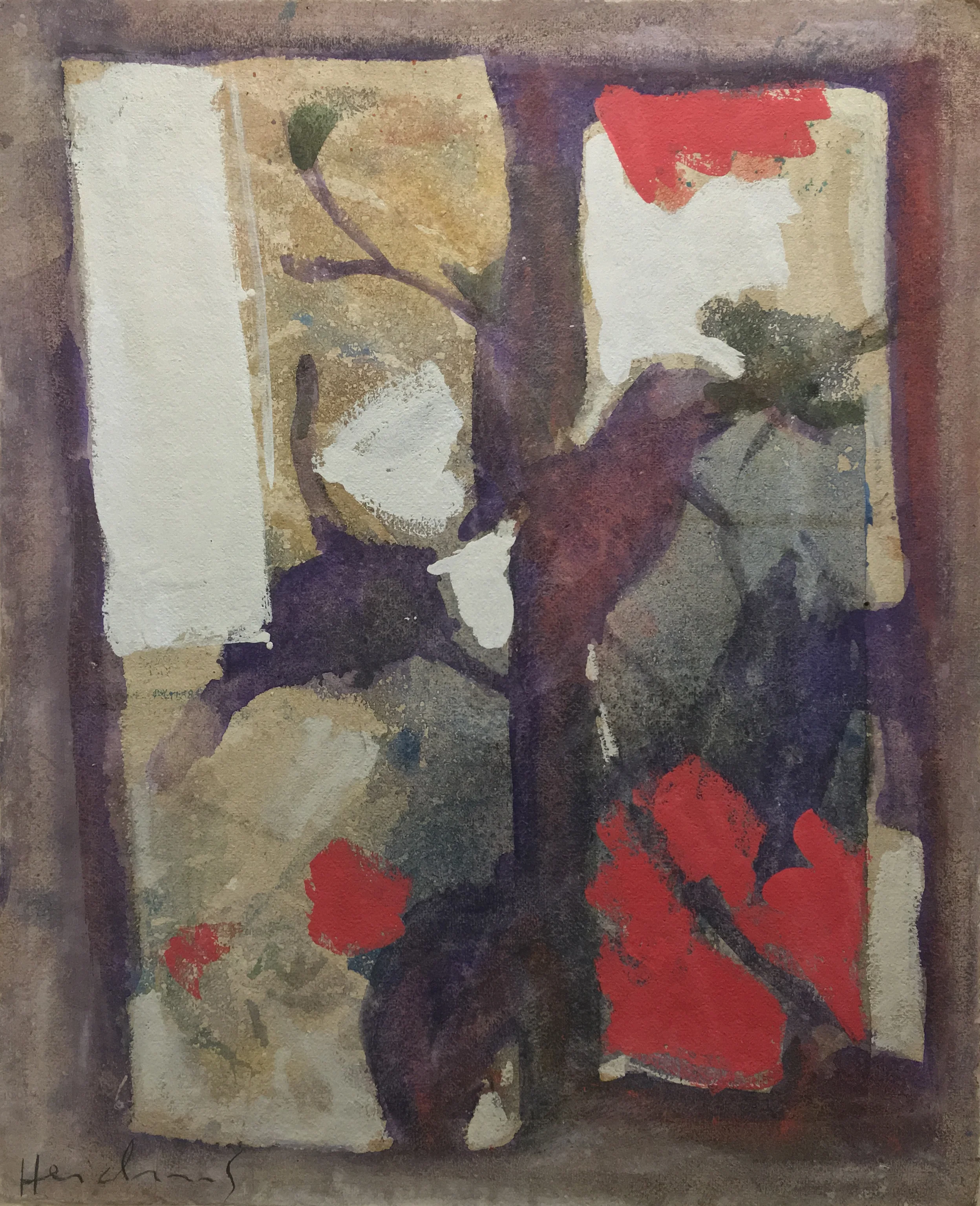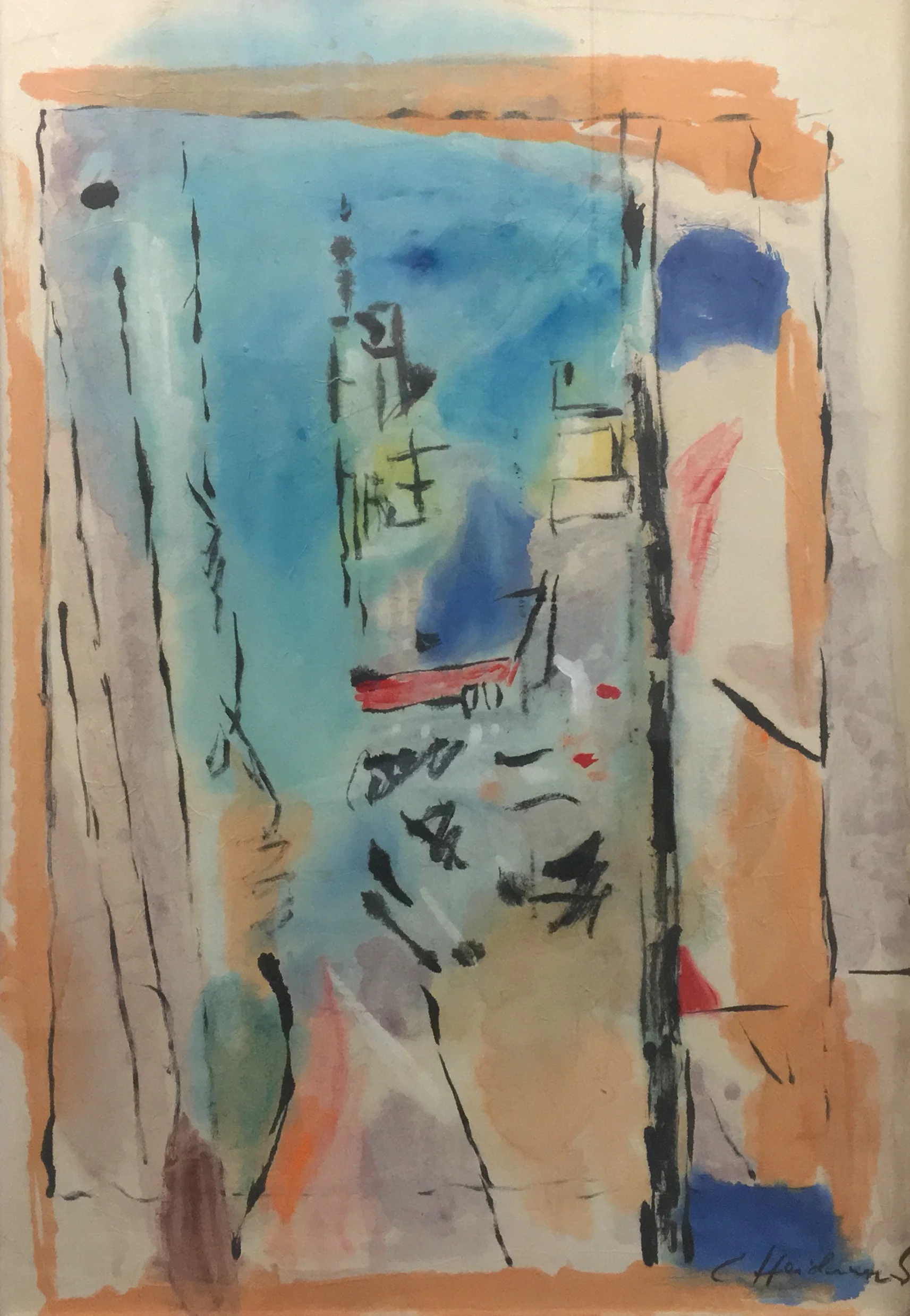Abstraction and Distance: New Paintings in the Carl Heidenreich Foundation Collection
Included in last year’s additions to the Carl Heidenreich Foundation’s collection are six works, which demonstrate the artist’s shifting focus from representation to the language of abstraction after immigrating to New York after WWII.
In the forward to the 2004 book Carl Heidenreich (Goethe Institut, New York), Dr. Alla Efimova writes about the unique syntax of abstraction employed by Heidenreich in relation to his experience as a refugee:
“Nonrepresentational art served many purposes in the twentieth century. For some it was a way of escaping ethnic marginalization and joining in the visual Esperanto of the international avant-garde. For others it was an assertion of the primacy of inner vision and liberation of the individual. In certain instances nonrepresentation served as a way of rejecting individual creativity and channeling art along paths of design and engineering. And at yet other times artists used it to avoid political connotations of a figurative work. Heidenreich’s late works, however, do not fit neatly into any accepted narrative of twentieth-century Modernism. They are an unusually consistent effort to work through the traumatic experience of immigration.
“Heidenreich recorded one of his first impressions of New York in a watercolor from circa 1942. It is a perspectival sketch of an avenue crossed by an above ground subway line. The artist’s viewpoint is somewhat estranged, detached. He is neither among the people on the street nor ignoring them. The artist here is an onlooker. An oil painting of New York rooftops, dating about a year later, positions the artist behind the windowsill of his apartment. A glass pane and a window frame separate him from the outside. The view is composed of color fields, but the perspectival structure is clearly maintained. The painting conveys a sense of distance; the faraway skyscrapers with brightly lit white blotches of windows stand out against the dusky sky. Heidenreich retreats behind the window that bears marks of its own—a black squiggle on the left side of the work appears to be painted directly on the imagined glass.”
Similarly, Heidenreich’s Window View (c. 1960, shown below) and his Untitled painting (shown above) place the viewer behind a pane of glass or at a distance from their subjects. Window View delineates a cityscape seen from behind the frame of a window. Warm tones of orange and beige separate interior from the vibrant blues, reds, and yellows of the outside world. In Untitled, meanwhile, the purple hues of the window sash and mullions merge with the natural forms of plant life outdoors. Blocks of white paint, like light reflecting off the window, obscure the image of what might exist beyond.
CARL HEIDENREICH, WINDOW VIEW, CIRCA 1960. MIXED MEDIA ON PAPER. 32 X 23 INCHES. COLLECTION OF THE CARL HEIDENREICH FOUNDATION.
Efimova continues:
“In the paintings and watercolors created in the following two decades, Heidenreich proceeded to paint himself in, to mark and smear the window surface until only faint silhouettes of the outside world can be distinguished through layers and layers of oils, gesso, and wash. In a number of works, a recognizable object shows through, surprisingly, almost accidentally. In a watercolor from the 1950s, a bouquet of pink flowers metamorphoses out of layers of aquarelle. Then the image recedes, as it does in dozens of works in which the recognizable world is scratched out and covered over.”
CARL HEIDENREICH, UNTITLED (LANDSCAPE IN WHITE AND BLUE), CIRCA 1961. WATERCOLOR ON PAPER. 21 X 29 INCHES. COLLECTION OF THE CARL HEIDENREICH FOUNDATION.
“A strong sense of semi-penetrable surface also appears in Heidenreich’s work of the 1960s, the series on Mexico and Alaska. A crumbling stone wall, probably derived from the memory of Mayan ruins, seems to separate the artist from the outside world in the Mexican paintings. A snowy, icy surface, which neither reflects light nor lets it through, stands between the artist and nature in the series of Alaskan watercolors.”


